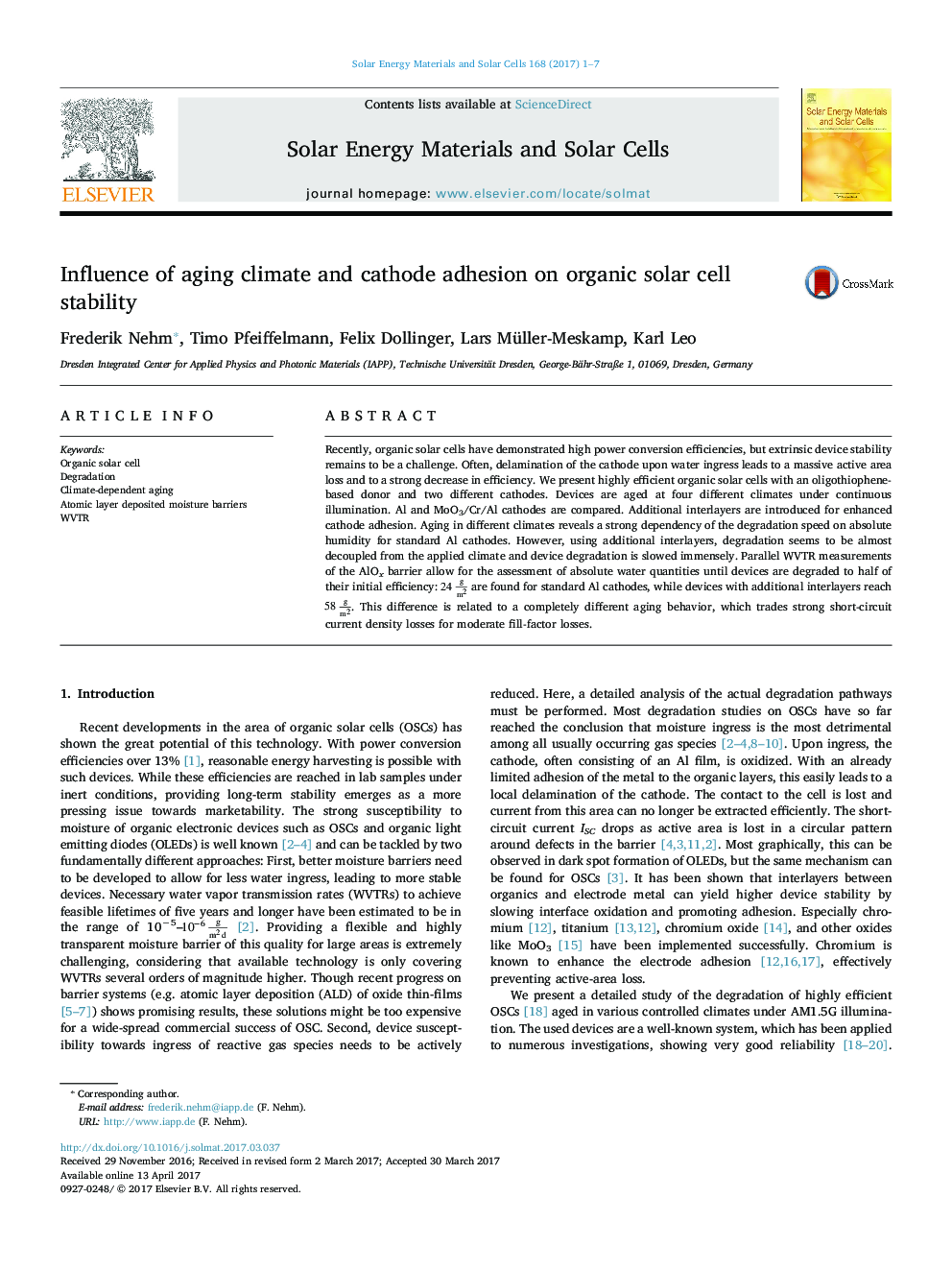| Article ID | Journal | Published Year | Pages | File Type |
|---|---|---|---|---|
| 4758775 | Solar Energy Materials and Solar Cells | 2017 | 7 Pages |
Abstract
Recently, organic solar cells have demonstrated high power conversion efficiencies, but extrinsic device stability remains to be a challenge. Often, delamination of the cathode upon water ingress leads to a massive active area loss and to a strong decrease in efficiency. We present highly efficient organic solar cells with an oligothiophene-based donor and two different cathodes. Devices are aged at four different climates under continuous illumination. Al and MoO3/Cr/Al cathodes are compared. Additional interlayers are introduced for enhanced cathode adhesion. Aging in different climates reveals a strong dependency of the degradation speed on absolute humidity for standard Al cathodes. However, using additional interlayers, degradation seems to be almost decoupled from the applied climate and device degradation is slowed immensely. Parallel WVTR measurements of the AlOx barrier allow for the assessment of absolute water quantities until devices are degraded to half of their initial efficiency: 24gm2 are found for standard Al cathodes, while devices with additional interlayers reach 58gm2. This difference is related to a completely different aging behavior, which trades strong short-circuit current density losses for moderate fill-factor losses.
Keywords
Related Topics
Physical Sciences and Engineering
Chemical Engineering
Catalysis
Authors
Frederik Nehm, Timo Pfeiffelmann, Felix Dollinger, Lars Müller-Meskamp, Karl Leo,
